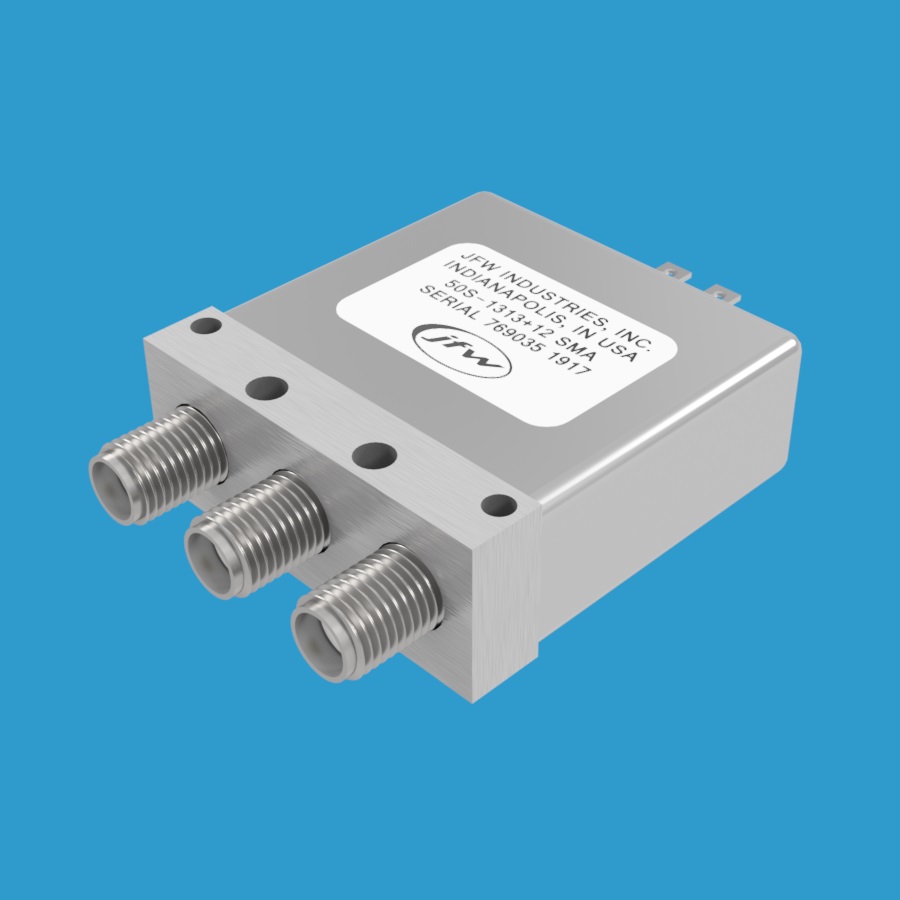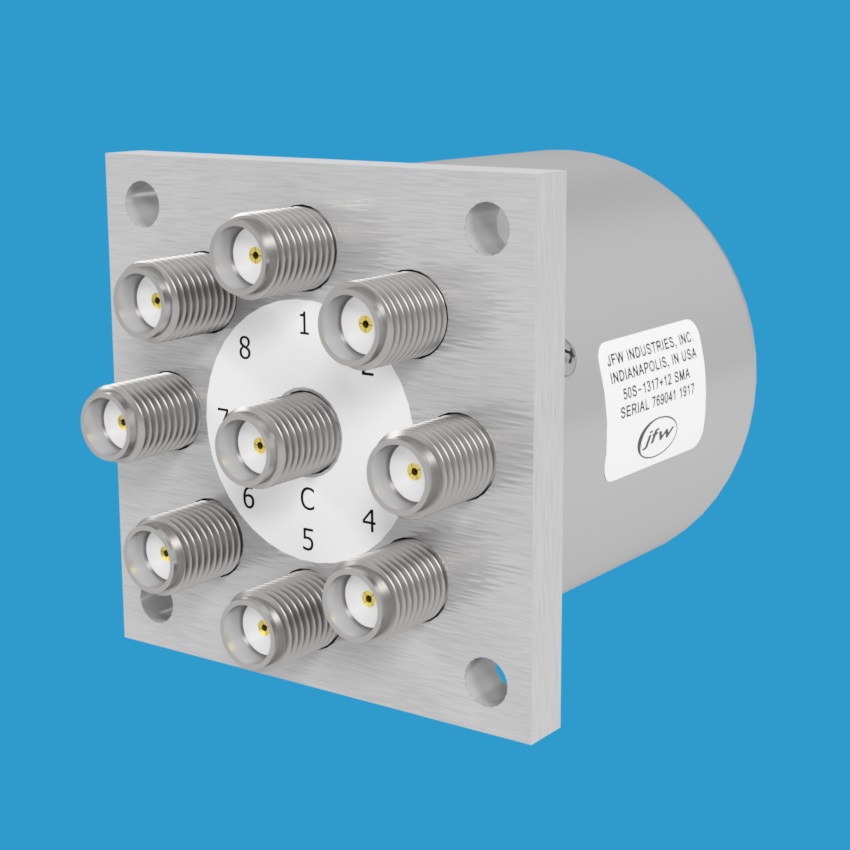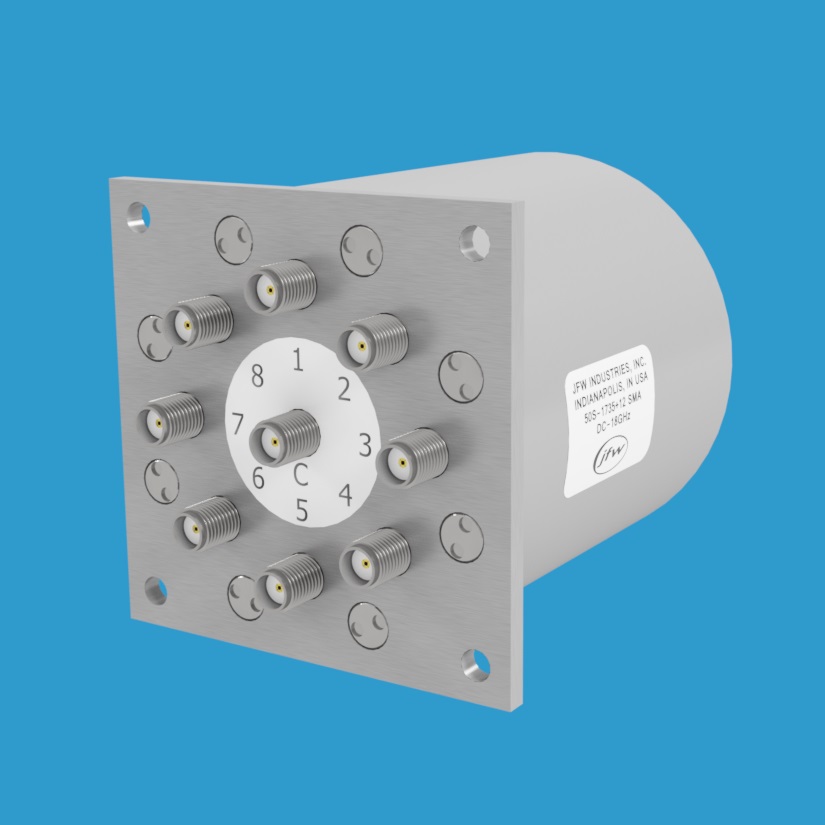What are the 3 types of electro-mechanical RF switches?
The goal of this application note is to differentiate the three different types of electro-mechanical RF switch types. Each type has its own unique functionality and its own pros and cons. Understanding their differences is key to getting the functionality you require. There is a cost tradeoff for latching and failsafe/normally open functionality. Mechanically latching switches are more costly than failsafe or normally open switches.
Failsafe RF Switches
Description
The two most common configurations of failsafe electro-mechanical RF switch are the 1P2T switch and the transfer switch. Because 1P2T switches are so widely used we will use 1P2T model 50S-1313+12 SMA as our example failsafe switch. The three SMA ports are marked NO (normally open), COM (common port) and NC (normally closed). The failsafe path is COM-to-NC.
Control
With no control Voltage applied, the failsafe 1P2T will default to the failsafe path (COM-to-NC). When you apply +12Vdc to the control line, the 1P2T will switch to path COM-to-NO. If the power goes out in your lab, the switch will default to the failsafe path COM-to-NC.
Pros & Cons
- Less costly than mechanically latching RF switches
- Still provides RF path when control power is lost
- 1 control line
- Does not have an “all off” setting
- Failsafe models available as reflective or absorptive
Normally Open RF Switches
Description
The most common normally open electro-mechanical RF switch configurations are 1P3T, 1P4T, 1P6T, 1P8T and 1P12T. We will use 1P8T model 50S-1317+12 SMA as our example normally open RF switch. It has nine total ports: COM, J1-J8. It has 8 control lines (C1-C8) that are +12Vdc activated. Only one path can be active at a time. Activating multiple paths simultaneously can damage the switch. A normally open 1P8T will be less costly than a latching 1P8T. Normally open switches also have a unique ability that failsafe and latching switches do not. They have an “all off” setting. The all off setting can be used to maximize port to port isolation when building a switch assembly or switch matrix.
Control
With no control Voltage applied, the normally open 1P8T will default to the “all off” state. If you apply +12Vdc to the control line C8, the path COM-to-J8 will be activated while all other ports will be turned off.
Pros & Cons
- Less costly than mechanically latching RF switches
- Has an “all off” setting
- No RF thru path when control power is lost
- Normally open models available as reflective or absorptive
Latching RF Switches
Description
The most common latching electro-mechanical RF switch configurations are 1P2T, 1P4T, 1P6T, and 1P8T. We will use 1P8T model 50S-1735+12 SMA as our example latching RF switch. It has nine total ports: COM, J1-J8. It requires a DC supply of +12Vdc. It has 8 control lines (C1-C8) that are GND activated. Only one path can be active at a time. Activating multiple paths simultaneously can damage the switch. Latching electro-mechanical switches will stay set at their last path setting even if the DC supply is lost. Latching electro-mechanical switches are most often used to build switch assemblies or switch matrix that route communication systems together. They are more costly than normally open switches, but have to be used when it is mission critical that communications system remain connected during a power outage. A latching electro-mechanical 1P8T switch does not have an “all off” setting. There will be one active path set at all times.
Control
With no control Voltage applied, the latching electro-mechanical 1P8T will be set to its last active path setting. If you apply GND to the control line C8 (for minimum of 15mSec), the path COM-to-J8 will be activated while all other ports will be turned off. It does not have an “all off” setting. There will be one active path set at all times.
Pros & Cons
- More costly than failsafe RF switches
- More costly than normally open RF switches
- Has a RF thru path when control power is lost
- Always 1 active RF path (no “all off” setting)
- Latching models available as reflective or absorptive





